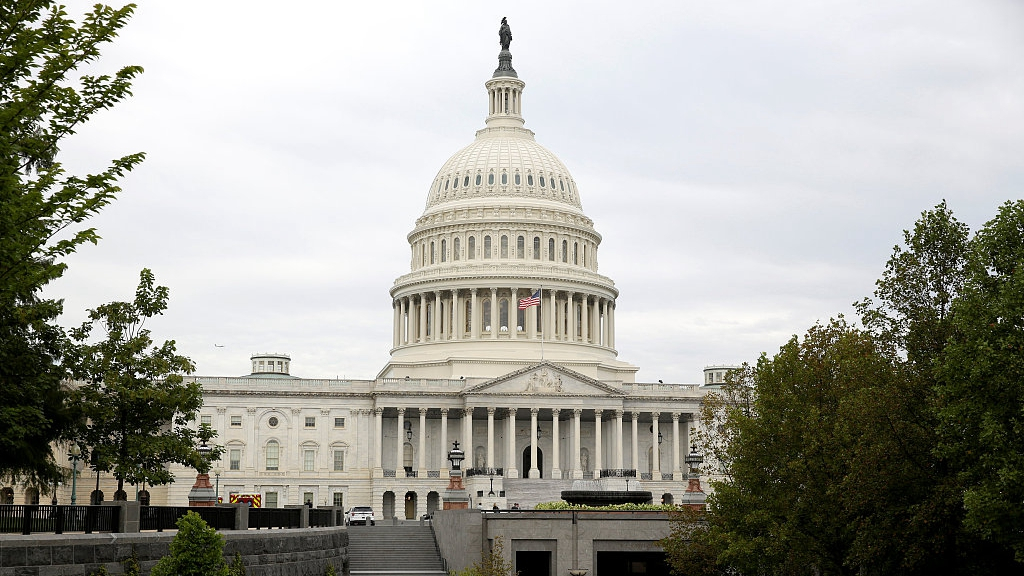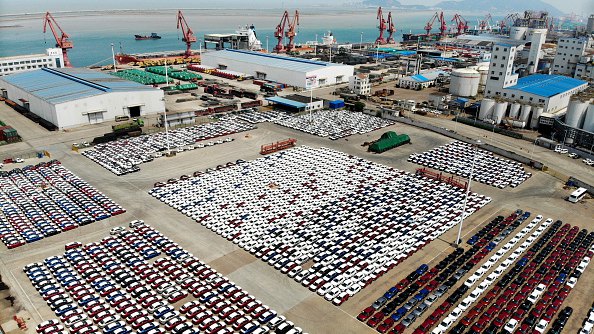
Editor's note: Ken Moak taught economic theory, public policy and globalization at the university level for 33 years. The article reflects the author's opinion, and not necessarily the views of CGTN.
On Tuesday, October 13, the International Monetary Fund (IMF) revised its country 2020 and 2021 economic outlook. The multilateral lending institution projected that Chinese economy will grow 1.9% and 8.2% in 2020 and 2021 respectively. The numbers are not a surprise because of China's successful containment of the COVID-19 pandemic and the government’s effective policies in reversing the economic downward trajectory created by the virus.
China successfully contained COVID-19 a few months after its outbreak in January, allowing it to reopen the economy sooner than any major economy. In addition, the government introduced a series of stimulus packages, providing funds to help consumers and businesses to address the economic losses, culminating in a 3.2-percent growth in the second quarter. A stronger recovery is expected in the third quarter, estimated at around 5%.
However, China will likely encounter some strong head winds in the foreseeable future. Surging COVID-19 in Europe, the Americas, India and other parts of the world could dampen the global economic recovery. Both Donald Trump and Joe Biden would likely retain tariffs on Chinese imports if their campaign rhetoric is any indication. The U.S. Congress would not let up on its anti-China policies.
And the geopolitical conflict between the U.S. and China will likely continue because of ideology and the hundreds of millions of dollars in campaign funds many of lawmakers in the U.S. Congress are receiving from lobby groups, particularly those representing the military-industrial complex. In receiving the political donations, lawmakers promote the groups' interests. To justify massive arms purchases, enemies and tensions must be created. China, of course, is the "ideal" enemy because the differences in political system, Asian, and deemed a near-peer power with the economic and military muscles to challenge U.S. supremacy. And conflict has spilled over to the economic realm, undermining the two countries' trade relationship.

The U.S. Capitol in Washington, U.S., September 12, 2017. /VCG Photo
The U.S. Capitol in Washington, U.S., September 12, 2017. /VCG Photo
The U.S. is pressuring countries in the Asia-Pacific to take sides, risking the region's economic prospects and stability. The "forced" U.S.-Japan-South Korea alliance culminated in the two Asian allies losing considerable amount of exports to China, their largest market and trade partner. For example, Samsung lost billions of dollars of chip sales to China because the U.S. barred the company from selling the products to Huawei and other Chinese companies.
Another harmful impact on the Chinese economy is the surging numbers of COVID-19 infections and deaths around the world. According to the World Health Organization and U.S.-based Johns Hopkins University, each of these countries or regions registered over 40,000 new cases daily. To stop the spread, these countries/regions are imposing more lockdowns, that in turn would slow down the economy and therefore reduce imports from China.
That said, China's strong government, huge financial toolkit, increasingly affluent large domestic market and the Belt and Road Initiative would likely cushion many of the adverse economic impacts of external shock. The Chinese government has demonstrated competence and political will to use its wealth in implementing effective and timely policies to reverse adverse economic impacts. For example, the Chinese government mounted a $586 billion stimulus package which reversed the economic downturn from 6.5% in 2008 to 9.2% in 2009. That, in turn, jump started economic development in some emerging markets and prevented some developed ones from falling into a recession.
It would appear that the Chinese government is onto a similar path in addressing the negative economic impacts caused by the COVID-19 pandemic. Earmarking hundreds of billions of U.S. dollars for infrastructure construction, $1.4 trillion for technology research and development, and the implementation of the "dual circulation" strategy over the next five years could be the answer to post-pandemic economic recovery not only in China, but also the rest of the world. Like the 2008 stimulus package, the policies would increase domestic aggregate demand and imports.

A large number of domestic vehicles assembled at the terminal of Dongfang company at Lianyungang port, waiting for shipment and export, in Lianyungang City, east China's Jiangsu Province, September 3, 2020. /Getty Images
A large number of domestic vehicles assembled at the terminal of Dongfang company at Lianyungang port, waiting for shipment and export, in Lianyungang City, east China's Jiangsu Province, September 3, 2020. /Getty Images
Expanding the road and railway networks to remote regions of the country leads to regional economic development, attracting new domestic and foreign investments. Access to the remote areas of Tibet, for example, would encourage investment in its resources and tourism sectors and the establishment of tertiary industries in supporting them, thus creating employment opportunities for the local population.
The "dual circulation" strategy of designating domestic consumption as the engine of growth and opening up the country further to increase quality growth is brilliant as it is practical. To stimulate consumption, the government plans to increase urbanization and personal income. Building more cities and towns would create a construction boom across the country, thereby increasing the demand for labor which in turn would raise wages. What's more, urban dwellers would buy more goods and services, stimulating the service industry.
On the technology front, the $1.4 trillion planned for technological research and development should make China self-sufficient in semiconductors and other high technology products. The huge sum should be able to attract the world's best and brightest scientists and engineers. And every year, China itself produces hundreds of thousands of scientists, technologists, engineers and mathematicians.
In spite of the obstacles mentioned earlier, the IMF growth projection for 2020 might be understated and that of 2021 should be nearing its target.
(If you want to contribute and have specific expertise, please contact us at opinions@cgtn.com.)